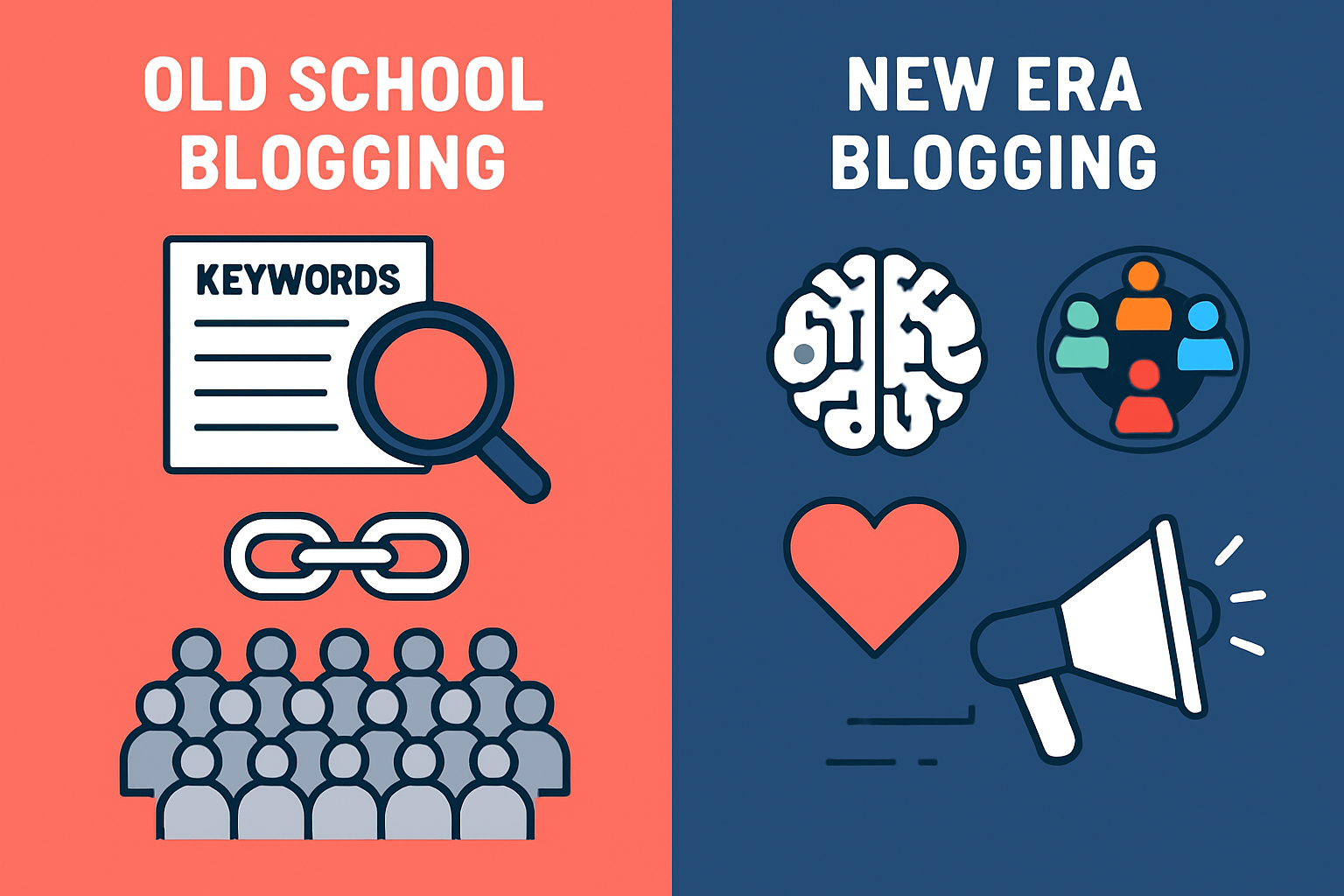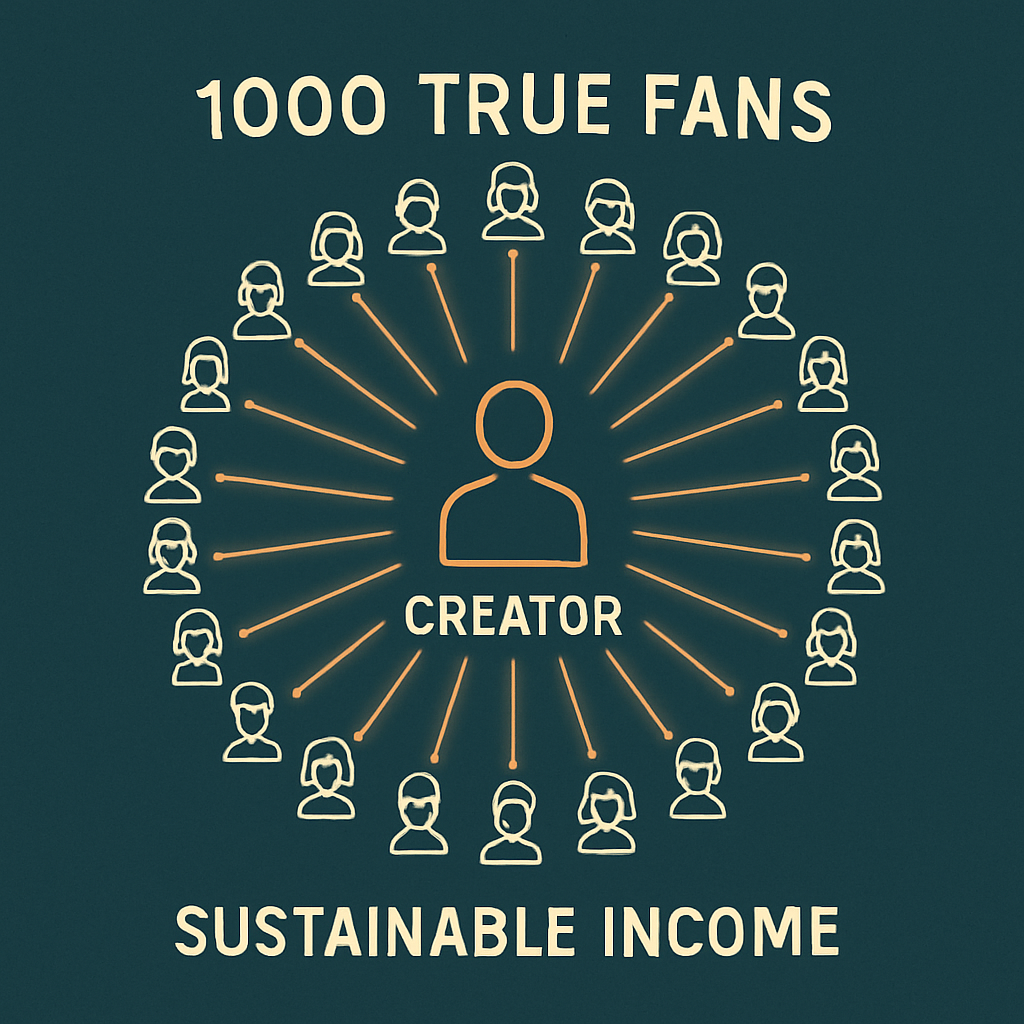
The digital landscape of content creation has undergone a seismic shift, a transformation so profound that it has fundamentally redefined what it means to be a blogger.
For those who remember the early days, blogging was a personal journal, a digital soapbox, or a passionate niche exploration.
Then came the era of search engine optimization, a time when the craft of writing was often subjugated to the cold, hard logic of algorithms.
Today, we stand at the precipice of a new age, one where artificial intelligence is both the greatest challenge and the most powerful tool for the modern creator.
This is the story of how blogging has evolved, why the old rules no longer apply, and how the timeless wisdom of thinkers like Seth Godin offers the clearest path forward in a world saturated with content.

The Old School: Blogging as a Game of Keywords and Volume
The first major phase of professional blogging was dominated by the pursuit of the Google algorithm.
It was a time when success was measured almost exclusively by traffic numbers, domain authority, and the coveted first-page ranking for high-volume keywords.
This approach, which we can call Old School SEO Blogging, turned writing into a mechanistic process.
The goal was not to connect with a reader, but to satisfy a bot.
The content itself became a commodity, often thin, repetitive, and optimized to the point of being soulless.
The Mechanics of the Grind
In this era, the strategy was simple, yet exhausting.
Content creators would use tools to find keywords with high search volume and low competition.
The resulting articles were often stuffed with these keywords, following rigid structures like “The 10 Best Ways to…” or “Ultimate Guide to…” regardless of whether the topic truly warranted such a format.
The primary metric of success was the sheer volume of content published.
The logic was that the more fishing lines you cast into the search engine ocean, the more fish (traffic) you would catch.
This led to a proliferation of what is now derisively called “content farm” material—articles that answered a query technically but failed to provide any real insight, originality, or human perspective.
The Problem with Chasing Numbers
The fundamental flaw in Old School SEO was its focus on the means (traffic) rather than the end (connection and value).
A million visitors who bounce immediately are less valuable than a thousand who stay, subscribe, and become advocates.
The entire industry became an arms race, with every blogger and business trying to out-optimize the other, leading to a race to the bottom in terms of quality and authenticity.
The audience was treated as a statistic, a number to be captured, rather than a community to be served.
The AI Revolution: The End of Commodity Content
The arrival of sophisticated generative artificial intelligence tools has acted as a powerful, disruptive force, effectively sounding the death knell for commodity content.
AI can now produce keyword-optimized, grammatically correct, and structurally sound articles in seconds.
This capability has two immediate and profound consequences for the world of blogging.
The Democratization of Production
AI has lowered the barrier to entry for content creation to zero.
Anyone can now generate a 3,000-word article on “The Best Dog Food for Poodles” without knowing anything about dogs or poodles.
This is a positive for speed and efficiency, but it also means the internet is about to be flooded with an unprecedented volume of perfectly adequate, yet utterly unremarkable, text.
The sheer scale of AI-generated content makes it impossible to compete on volume alone.
If a machine can write 100 articles a day, a human writing one a week is no longer a viable competitor in the traffic game.
The Rise of the Authenticity Premium
When everything can be faked, the only thing that matters is what cannot be faked: authenticity, originality, and human experience.
AI can synthesize information, but it cannot synthesize a life lived, a unique perspective, or a genuine passion.
The new challenge for bloggers is not to write better than the AI, but to write what the AI cannot write.
This means moving away from generic, keyword-driven topics and diving deep into personal expertise, unconventional insights, and the specific, messy details that make a story real.
The New Era: Blogging Without SEO (The Godin Way)
The modern blogger must embrace a philosophy that deliberately sidesteps the SEO arms race and focuses instead on building a community so loyal that they bypass search engines entirely to find your work.
Highly Recommended to read Seth’s blog and especially books –
One I think I noticed in Seth recent newsletter is he has a 50 year old email address or he first get his email 50 years ago. Pretty old guy
This is the essence of New Era Blogging, a movement that aligns perfectly with the philosophy of marketing guru Seth Godin.
Godin’s work has always been about permission, tribes, and making a difference, not about mass-market saturation.
The Power of the Niche: Targeting the Audience, Not the Algorithm
The core difference between the old and new eras is the target.
Old School Blogging targeted the search engine’s index.
New Era Blogging targets a specific, deeply engaged human being.
This shift requires a radical change in mindset: you must write for an audience of one, or at most, a very small, defined group.
When you write for a niche, you can use the language, the inside jokes, and the specific references that only that group understands.
This creates a powerful sense of belonging and exclusivity that generic, mass-market content can never achieve.
The content becomes a signal, a secret handshake that says, “I see you, and I understand your specific problem.”
Seth Godin’s 1000 True Fans: The Blueprint for Sustainable Success
The most compelling argument for this audience-first approach is found in the concept of “1000 True Fans,” a theory popularized by Kevin Kelly and championed by Seth Godin.
The idea is beautifully simple and profoundly liberating.
Defining the True Fan
A True Fan is not just a casual reader or a social media follower.
A True Fan is someone who will buy anything you produce.
They will drive 200 miles to see you speak, buy the expensive, limited-edition version of your product, and actively promote your work to their friends.
They are not just consumers; they are evangelists.
They are the people who care so much that their lives would be noticeably diminished if you stopped creating.
The Math of Independence
The magic of the number 1,000 is that it provides a pathway to a sustainable, independent career without needing to chase the impossible dream of mass stardom.
If you can find 1,000 people willing to spend, on average, $100 per year on your work—be it through courses, books, premium content, or merchandise—you have generated $100,000 in annual revenue.
This is a living wage for many, achieved with a tiny fraction of the internet’s population.
The focus shifts from scale to depth.
Instead of trying to get 10 million people to spend $0.01, you focus on getting 1,000 people to spend $100.
The latter is a far more achievable and rewarding goal for the individual creator.
The Godin Philosophy in Practice
Godin’s entire body of work, from Permission Marketing to Tribes, reinforces this idea.
He argues that in a noisy world, the only way to be heard is to be remarkable (a Purple Cow) and to earn the permission of your audience to communicate with them.
This is the antithesis of SEO, which is essentially a form of uninvited interruption based on a search query.
A True Fan gives you permission to speak to them directly, bypassing the gatekeepers of search and social media algorithms.
How AI Makes the True Fan Approach Essential
The paradox of the AI era is that while it makes content creation easier, it makes connection harder.
As the noise level increases exponentially, the human desire for genuine, signal-rich content intensifies.
AI acts as a filter, separating the signal from the noise, but only if the human creator is providing the signal.
The AI-Proof Content Strategy
To create content that is AI-proof, you must focus on the following three pillars:
1. Unfiltered Experience:
Write about your failures, your specific process, your unique discoveries, and the things you have learned that are not yet codified in a public dataset.
AI cannot write a truly authentic “I tried this and it failed” post because it has no “I.”
2. Deep Empathy and Specificity:
AI is a generalist; it writes for the average person.
You must write for the specific person with the specific problem.
Instead of “How to Start a Podcast,” write “The Unconventional Gear Setup for Podcasters Who Record in a Shared Apartment with Thin Walls.”
This level of specificity is what attracts and retains a True Fan.
3. The Community Loop:
Your blog post should not be a monologue; it should be the start of a conversation.
The best modern content is co-created with the audience, incorporating their feedback, questions, and unique contributions.
This feedback loop is something AI cannot replicate, as it requires genuine, real-time human interaction and adaptation.
The Practical Shift: From SEO to Audience-Centric Metrics
The transition to New Era Blogging requires a change in the metrics we value.
We must stop worshipping at the altar of vanity metrics and start focusing on indicators of deep engagement.
The following table illustrates the core differences in focus:
| Old School SEO Metric | New Era Audience Metric | Why the Shift Matters |
|---|---|---|
| Pageviews / Traffic Volume | Time on Page / Scroll Depth | A high time on page means the content is actually being read, not just clicked on. |
| Keyword Ranking | Email Sign-ups / Direct Traffic | Direct traffic and email sign-ups indicate a loyal audience that seeks you out, bypassing search engines. |
| Backlink Count | Comments / Community Engagement | Comments and discussions show that the content sparked a conversation, not just a link-building opportunity. |
| Bounce Rate | Conversion Rate (to a micro-commitment) | A micro-commitment (e.g., downloading a PDF, joining a private group) proves the reader trusts you enough to take the next step. |
The New SEO: Signal and Trust
It is important to note that this is not a call to abandon all SEO.
Instead, it is a call to redefine it.
In the age of AI, search engines are becoming increasingly sophisticated, moving away from simple keyword matching to understanding intent and trustworthiness.
Google’s E-E-A-T (Experience, Expertise, Authoritativeness, Trustworthiness) guidelines are a direct response to the rise of generic, AI-generated content.
The best way to satisfy E-E-A-T is to be a True Fan magnet.
When you write from genuine experience and build a loyal tribe, you naturally generate the signals of trust—direct traffic, social shares, and deep engagement—that modern algorithms prioritize.
The Ethical Imperative of AI in Blogging
The power of AI comes with an ethical responsibility for the modern blogger.
The temptation to use AI to generate 90% of your content is strong, but it is a short-term strategy that undermines the long-term goal of building a True Fan base.
AI as a Co-Pilot, Not an Author
The most successful creators are using AI not to write the content, but to enhance the process.
AI should be treated as a co-pilot, a research assistant, or an editor, not the primary author.
It can be used to:
1. Accelerate Research: Quickly summarize complex topics or find data points to support a human-driven argument.
2. Optimize Structure: Suggest alternative headings or improve the flow of a paragraph.
3. Overcome Writer’s Block: Generate a few opening lines or alternative angles to kickstart the creative process.
4. Enhance Accessibility: Automatically generate meta descriptions, alt text for images, or summaries for different platforms.
The human must always provide the thesis, the unique insight, and the final edit.
If you remove the human element, you remove the very thing that makes your content valuable in the New Era.
The Path Forward: Becoming Indispensable to Your Tribe
The future of blogging is not about shouting louder than everyone else; it is about whispering to the people who are truly listening.
It is a return to the roots of the internet as a tool for connection, not just commerce.
To thrive in this new landscape, the modern blogger must commit to a few core principles:
1. Embrace Scarcity in a World of Abundance:
Your content must be scarce in its quality, its perspective, and its willingness to go deep.
If AI can write it, it is abundant, and therefore, it is cheap.
Your value lies in the unique perspective that only you can provide.
2. Serve the Smallest Viable Audience:
Stop trying to appeal to everyone.
Identify the smallest group of people you can serve so well that they cannot imagine getting their information or inspiration from anywhere else.
This is your True Fan base.
3. Prioritize Direct Connection:
The most valuable asset you own is your direct line of communication with your audience, typically your email list.
Social media platforms and search engines are rented land; your email list is owned land.
Focus your energy on converting casual readers into subscribers who give you permission to speak to them directly.
4. Be the Signal:
In a world of noise, be the clear, consistent signal.
Publish with integrity, write with passion, and always prioritize the needs of your True Fans over the demands of the algorithm.
The shift from Old School SEO to New Era, AI-powered, Godin-inspired blogging is not just a strategic change; it is a philosophical one.
It is a move from chasing fleeting numbers to building lasting relationships.
It is the realization that you don’t need millions of followers to make your idea successful; you only need 1000 True Fans.
And in the age of artificial intelligence, that human connection is the most powerful competitive advantage of all.



